Five Beautiful Shrubs That Attract Pollinators
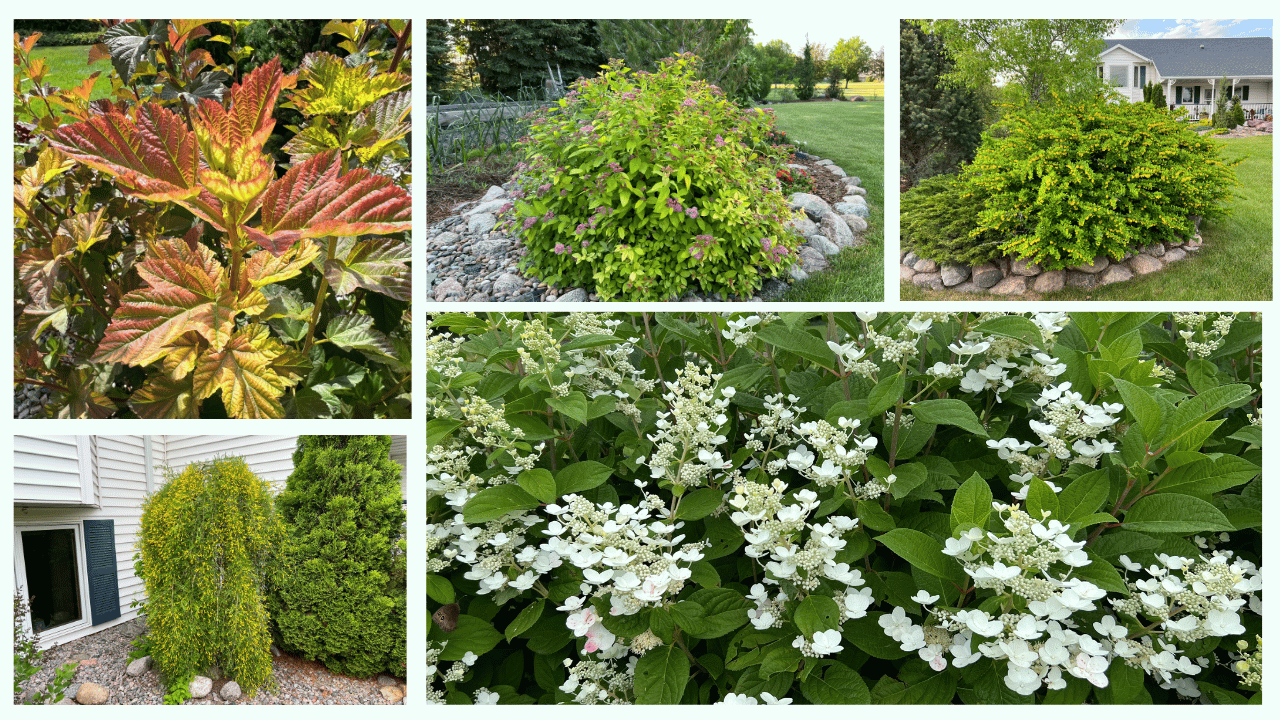
When spring comes around, it's hard to describe that feeling you get when all the plants have come out of dormancy after a long winter, flowering begins, and you see those first bees appear.
It seems flowering herbaceous perennials and annuals get the most attention in pollinator gardens. But what about shrubs? And trees?
I'm a tree and shrub guy, the woody ornamentals. Imagine the additional flowers available on a 6' x 6' shrub rather than a 1' x 1' flowering perennial. However, not all shrubs have to be large to attract pollinators and provide food and habitat. Let's start the conversation with these five great shrubs:
- Emerald Carousel Barberry, Berberis' Tara'
- Amber Jubilee Ninebark, Physocarpus opulifolius' Jefam'
- Weeping Caragana, Caragana arborescens 'Pendula'
- Double Play Gold Spirea, Spiraea japonica 'Yan'
- Quick Fire Hydrangea, Hydrangea paniculata 'Bulk'
Emerald Carousel Barberry, Berberis' Tara'
Depending on where you live, many barberry varieties are considered invasive, so this variety may no longer be available at your local plant nursery. It is a shame because it is a beautiful shrub with many showy qualities throughout the growing season. I have a small beehive on site, and this is one of the honeybee's favorite shrubs. The video shows the bees in action up close. This shrub also boasts beautiful fall colors, desirable fruits for winter interest, and food for wildlife.
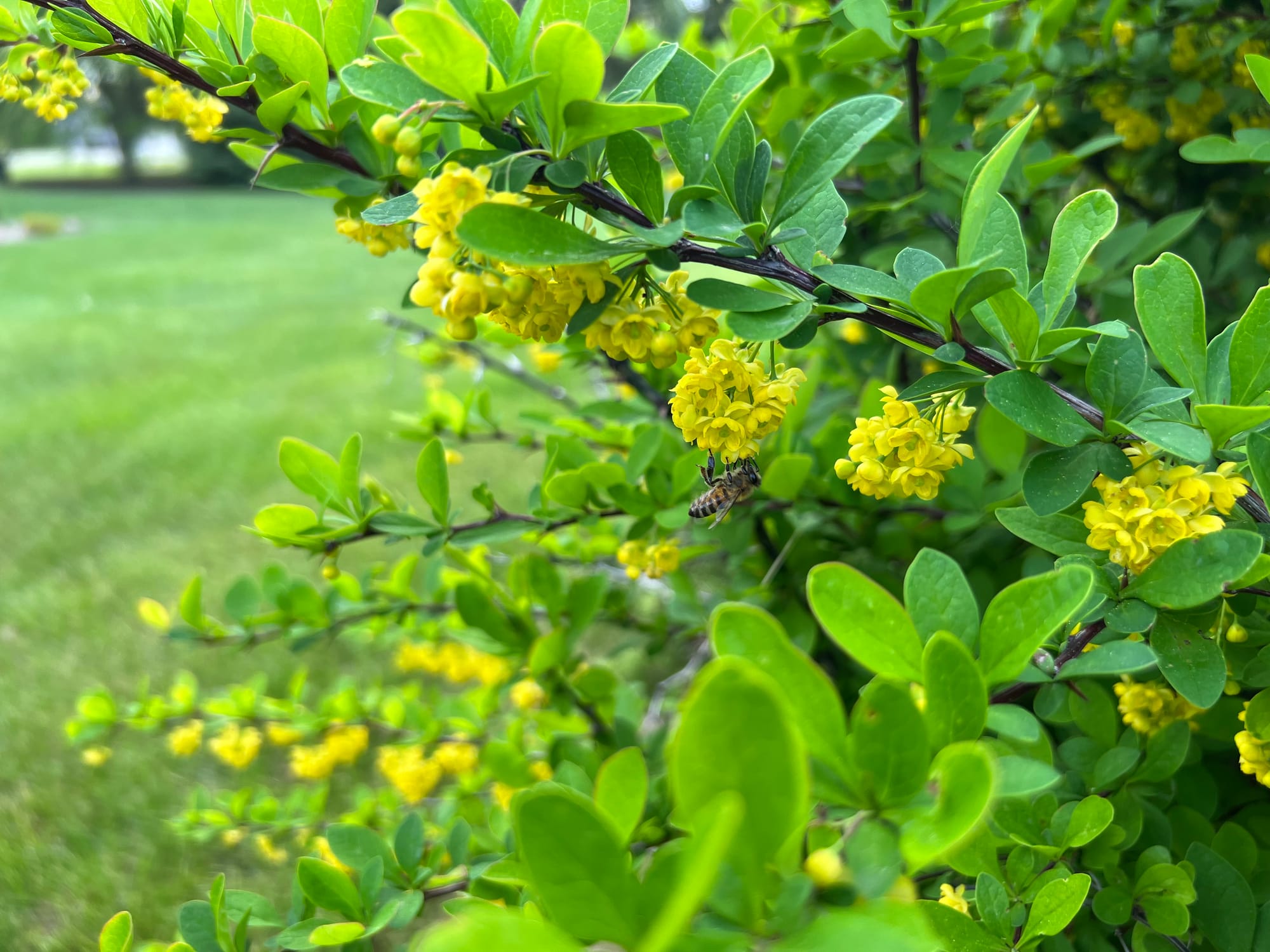
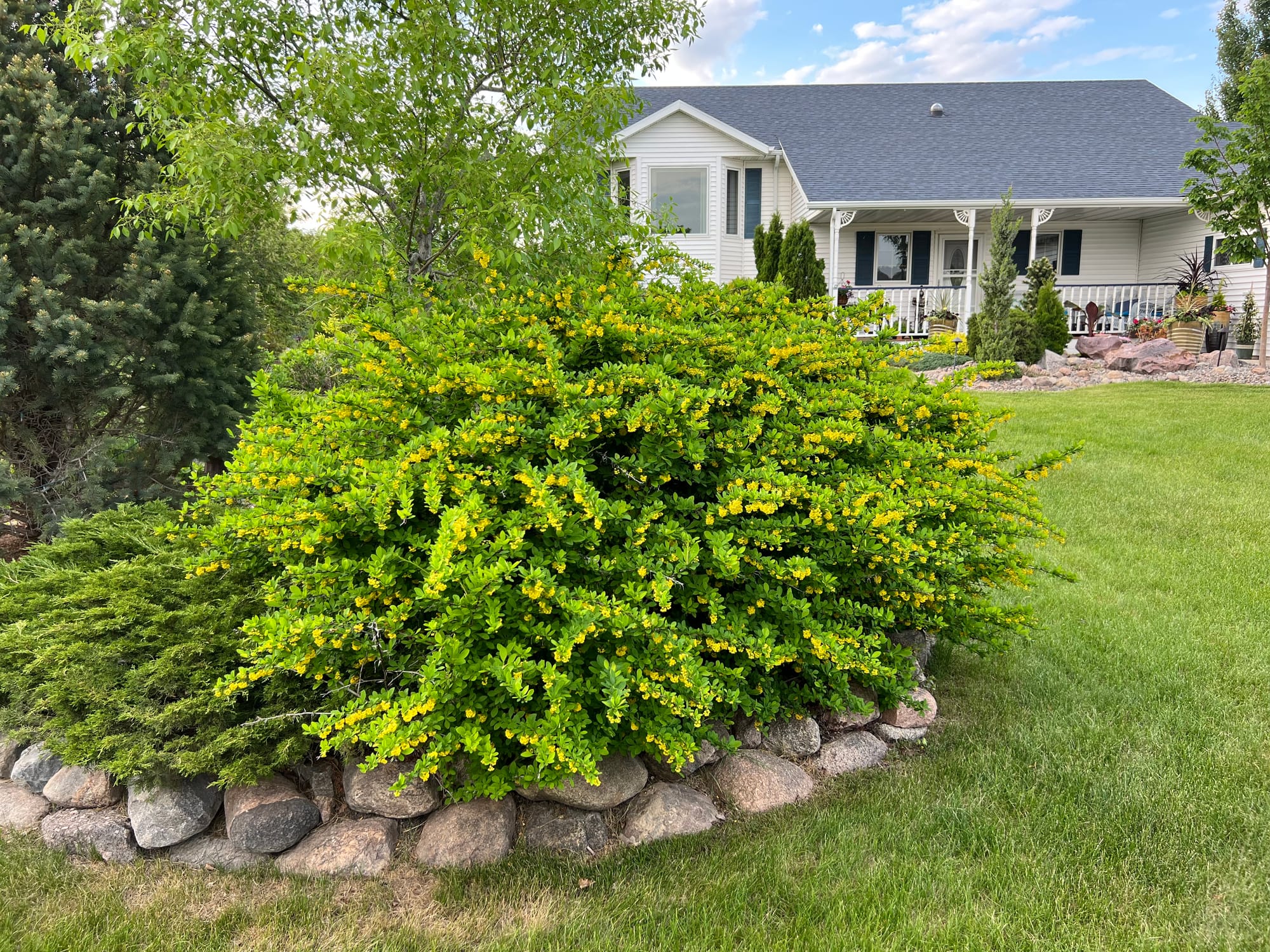
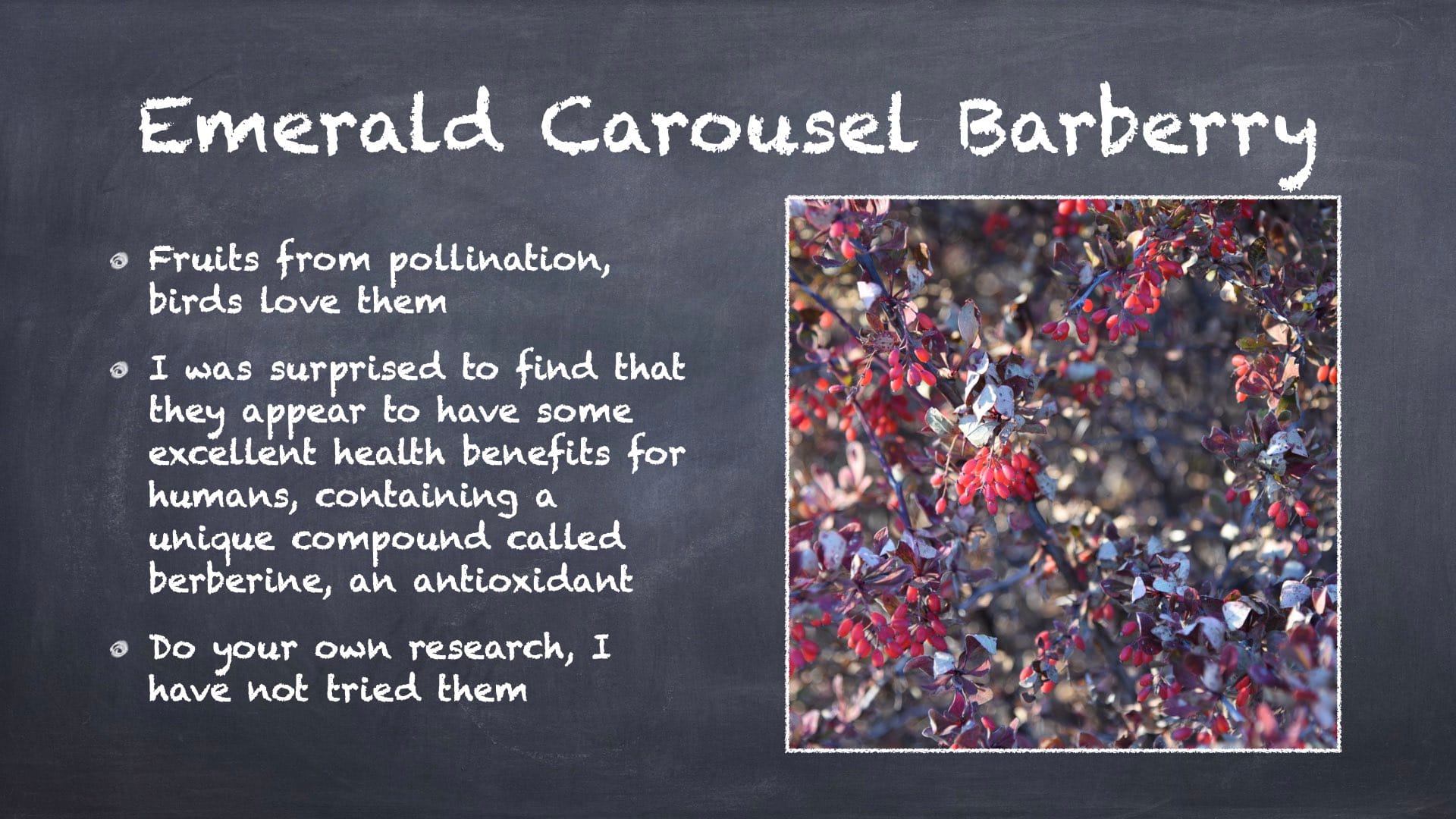
Emerald Carousel Barberry
Amber Jubilee Ninebark, Physocarpus opulifolius' Jefam'
Amber Jubilee is a beautiful shrub with vibrant leaves that change through the season. It made the shrub pollinator list here for two reasons. Flowers and aphids. Like clockwork, my Amber Jubilee gets aphids every spring. The aphids ingest the plant tissue, leaving behind honeydew for other insects like ants. The two insects work together.
We usually only think of bees as pollinators, but pollination can occur from many vectors. A vector is something that moves pollen from point A to B: insects, water, wind, etc. Successful pollinator gardens aim to draw in as many insects as possible, so you must tolerate some plant injury from feeding. It's part of the ecosystem and fun to observe.
Ninebarks bloom on old wood. Due to a tight planting location, I usually prune my Amber Jubilee hard each spring, so I did not have a photo of it in bloom. I've included a photo of Summer Wine Ninebark to show you how dramatic the flowering can be. Prune Ninebarks right after flowering has completed if you want blooms each season.
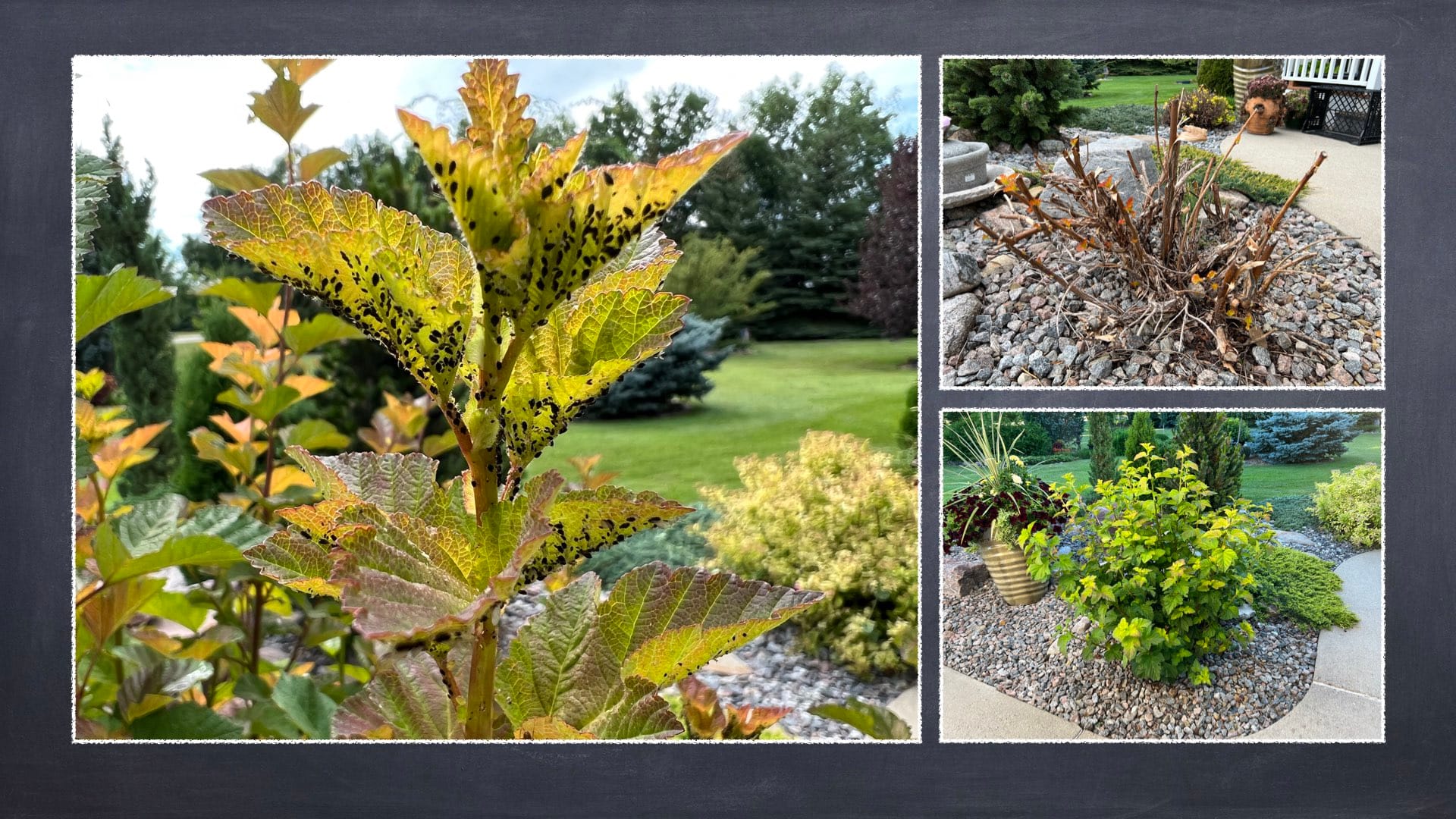
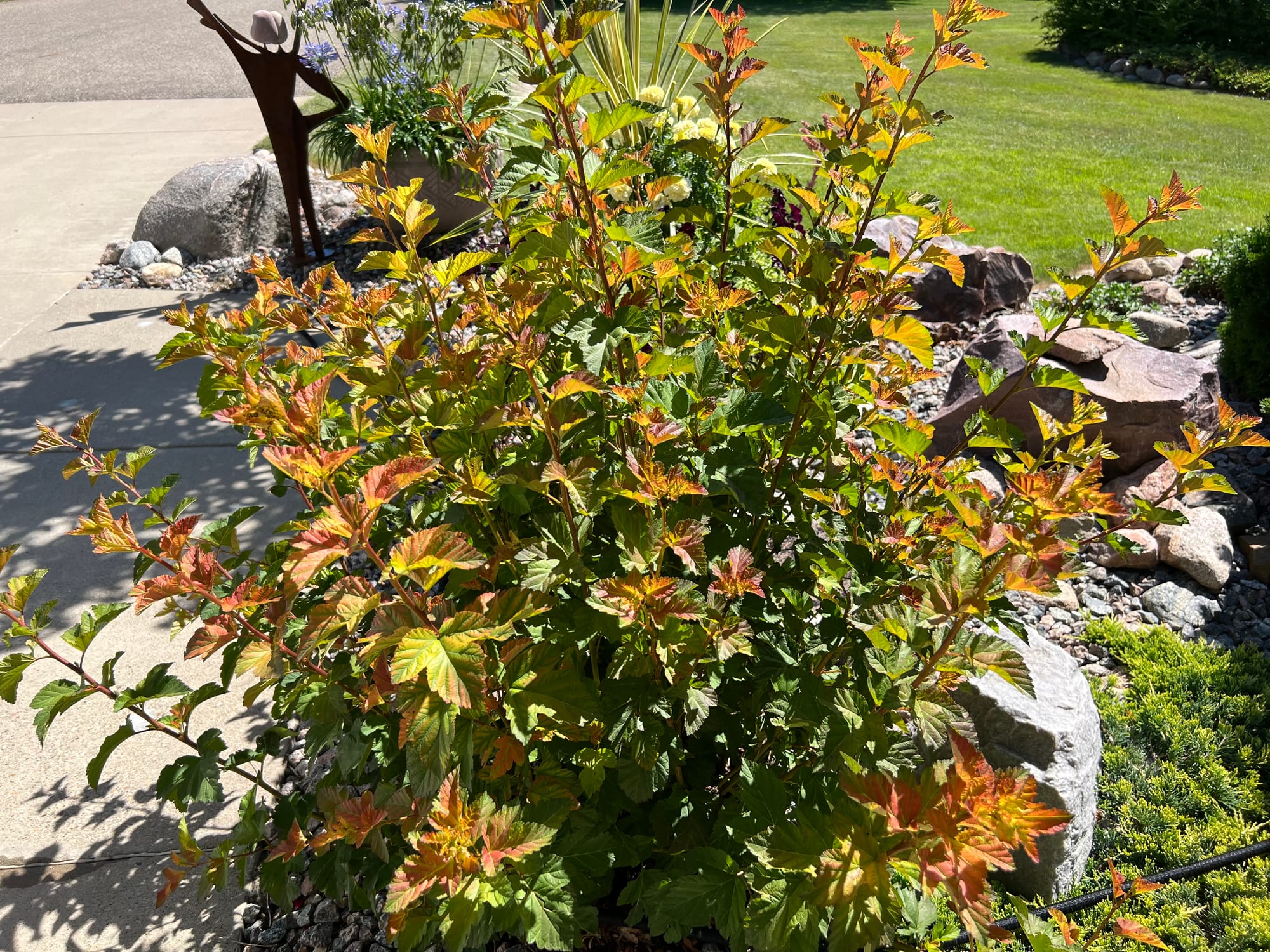
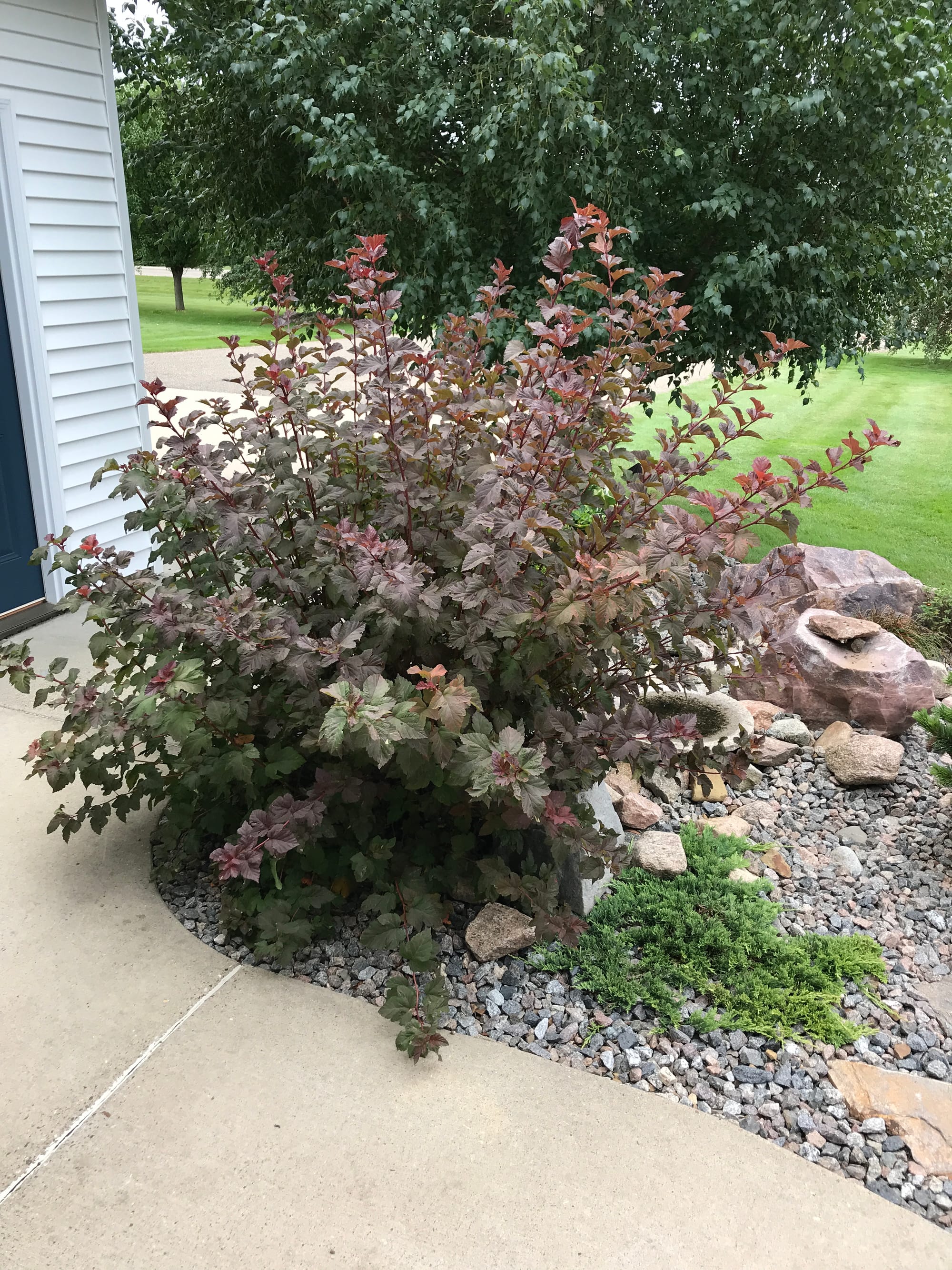
Aphids On Amber Jubilee Ninebark On Left - Changing Leaf Colors Through The Season
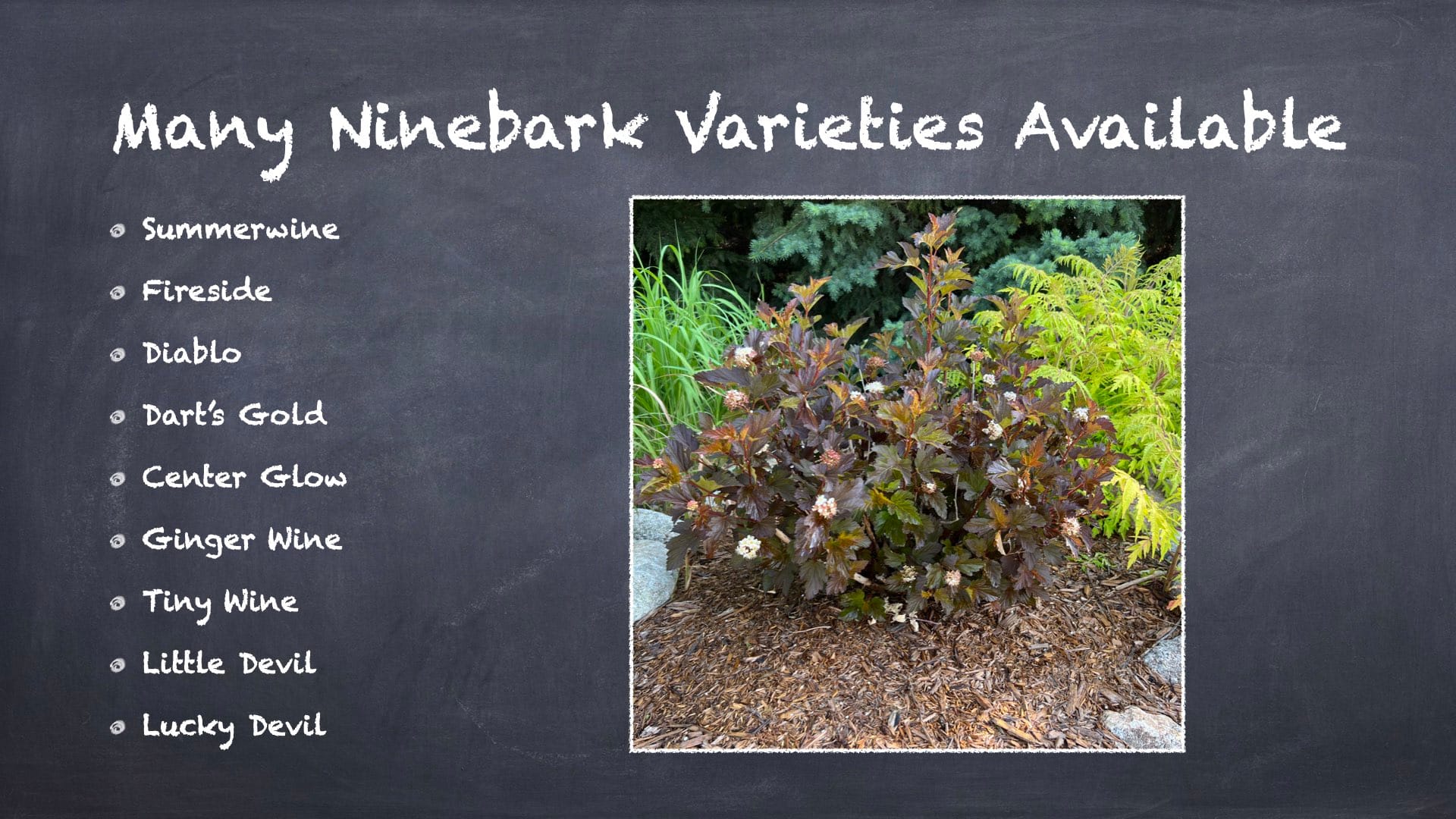
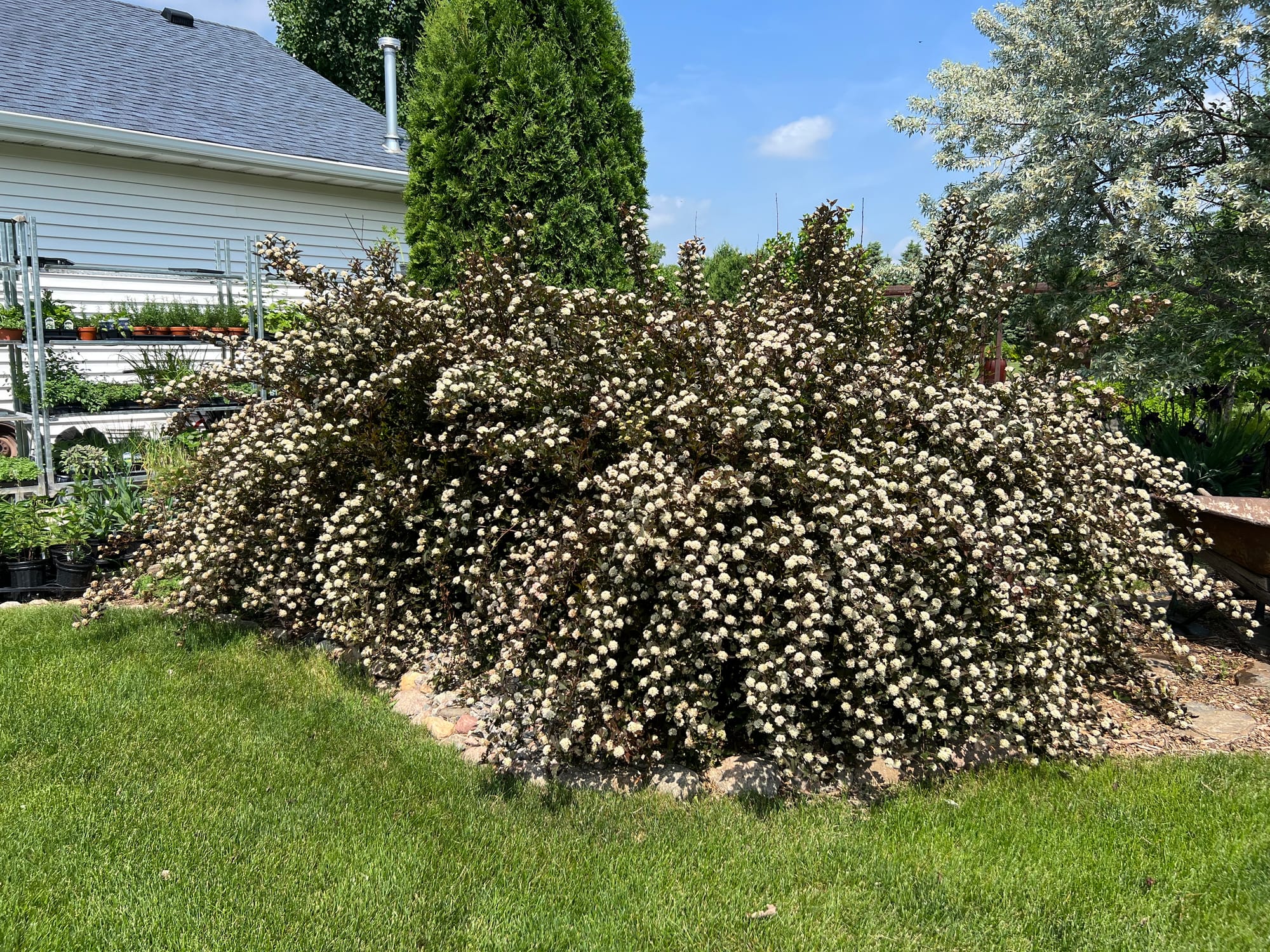
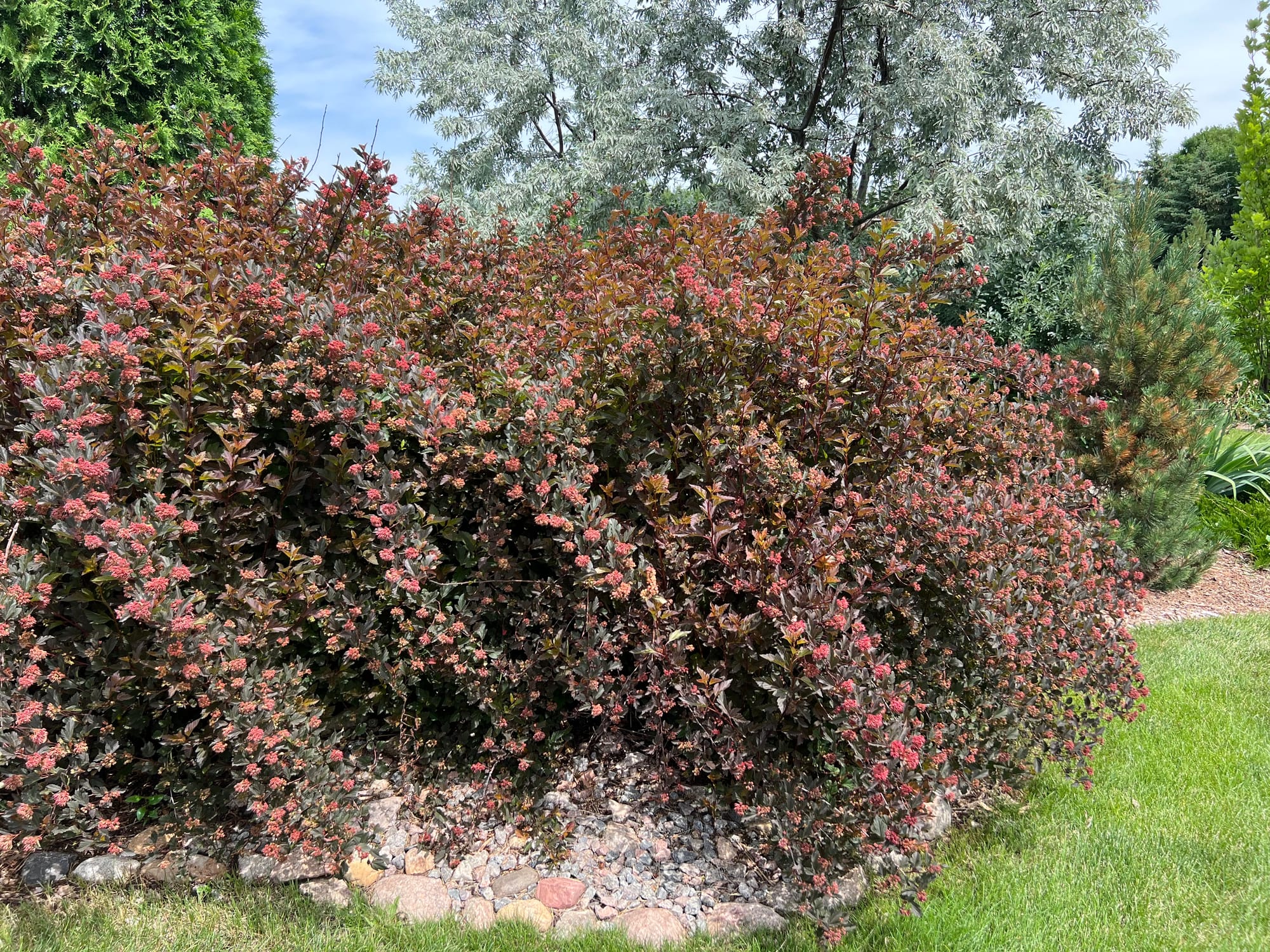
Summer Wine Ninebark - Full Bloom And After Bloom
Weeping Caragana, Caragana arborescens 'Pendula'
I grew up in the prairie states, and after the 1930s, The Dirty Thirties, miles of trees and shrubs were planted in the northern Great Plains to help avoid wind erosion. The Siberian Peashrub was a big part of the "program". The yellow flowering caragana shrub was noticeable in nearly every windbreak. This shrub has fallen out of favor in the nursery trade and is now rarely found.
Here, we highlight the weeping form, which still has the unique yellow Peashrub flower. Honeybees love this plant as much as the Emerald Carousel Barberry.
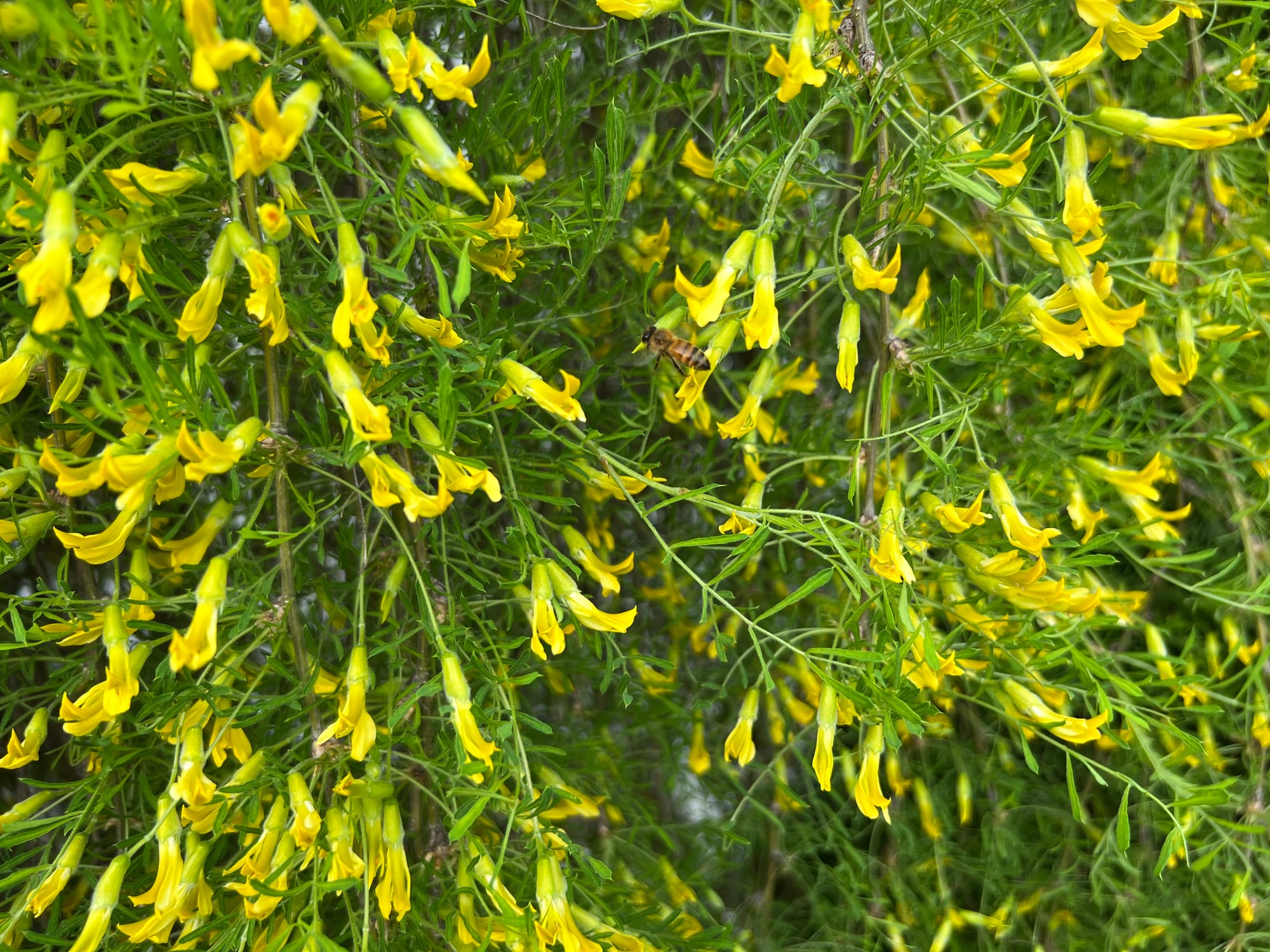
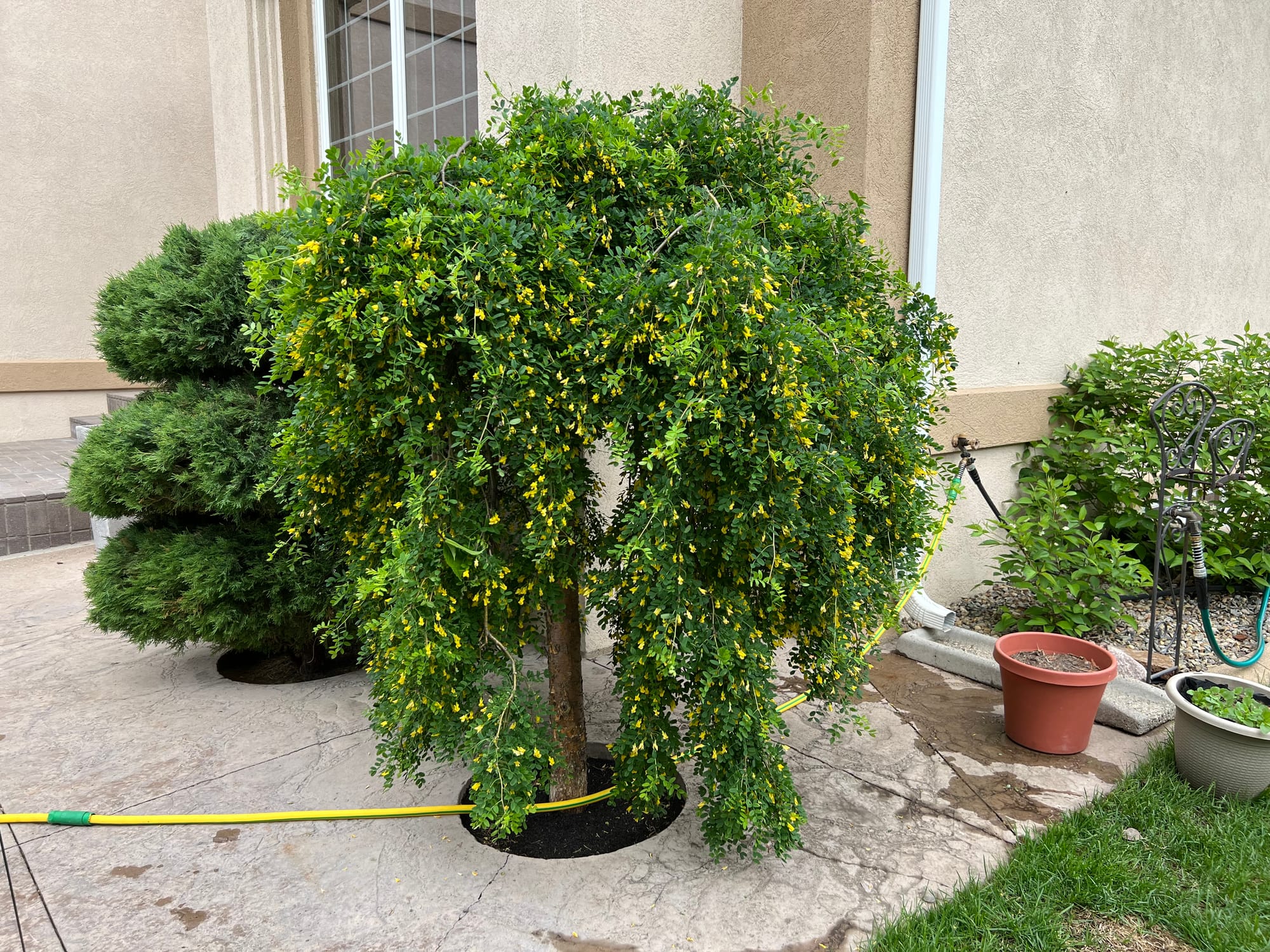
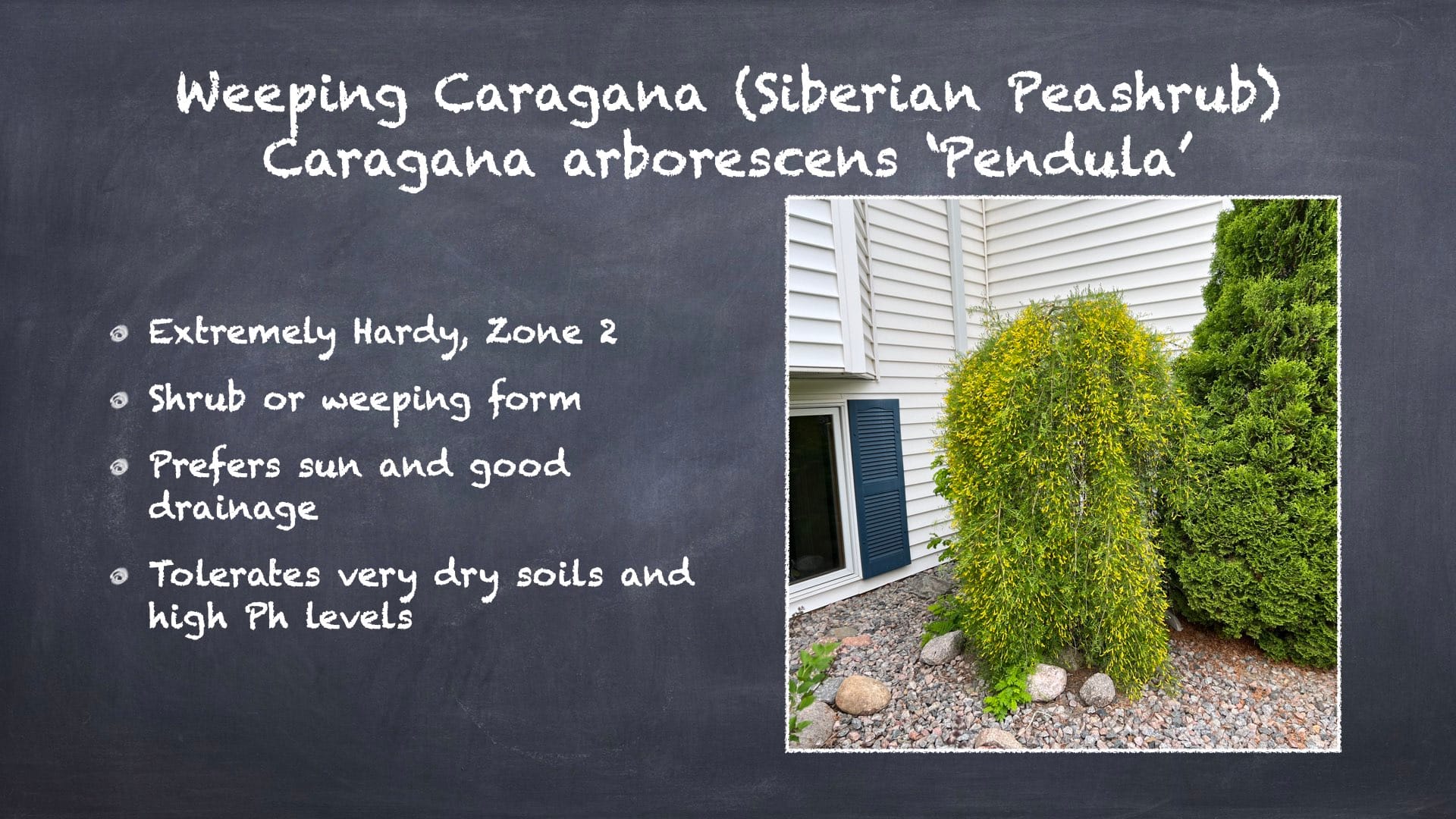
Weeping Caragana (Peashrub)
Double Play Gold Spirea, Spiraea japonica 'Yan'
Where do you start with Spireas? There are likely hundreds of varieties to choose from. On Double Play Gold, I notice mostly Bumblebees. Bumblebees are considered the best insect to draw in for tomato plant pollinators. The bumblebee creates the perfect vibration necessary for flower fertilization to occur. So, this is a good companion plant to have growing near your tomatoes.
Spireas are spring bloomers. If you lightly prune this shrub after flowering, you will often get another light round of flowers in late summer.
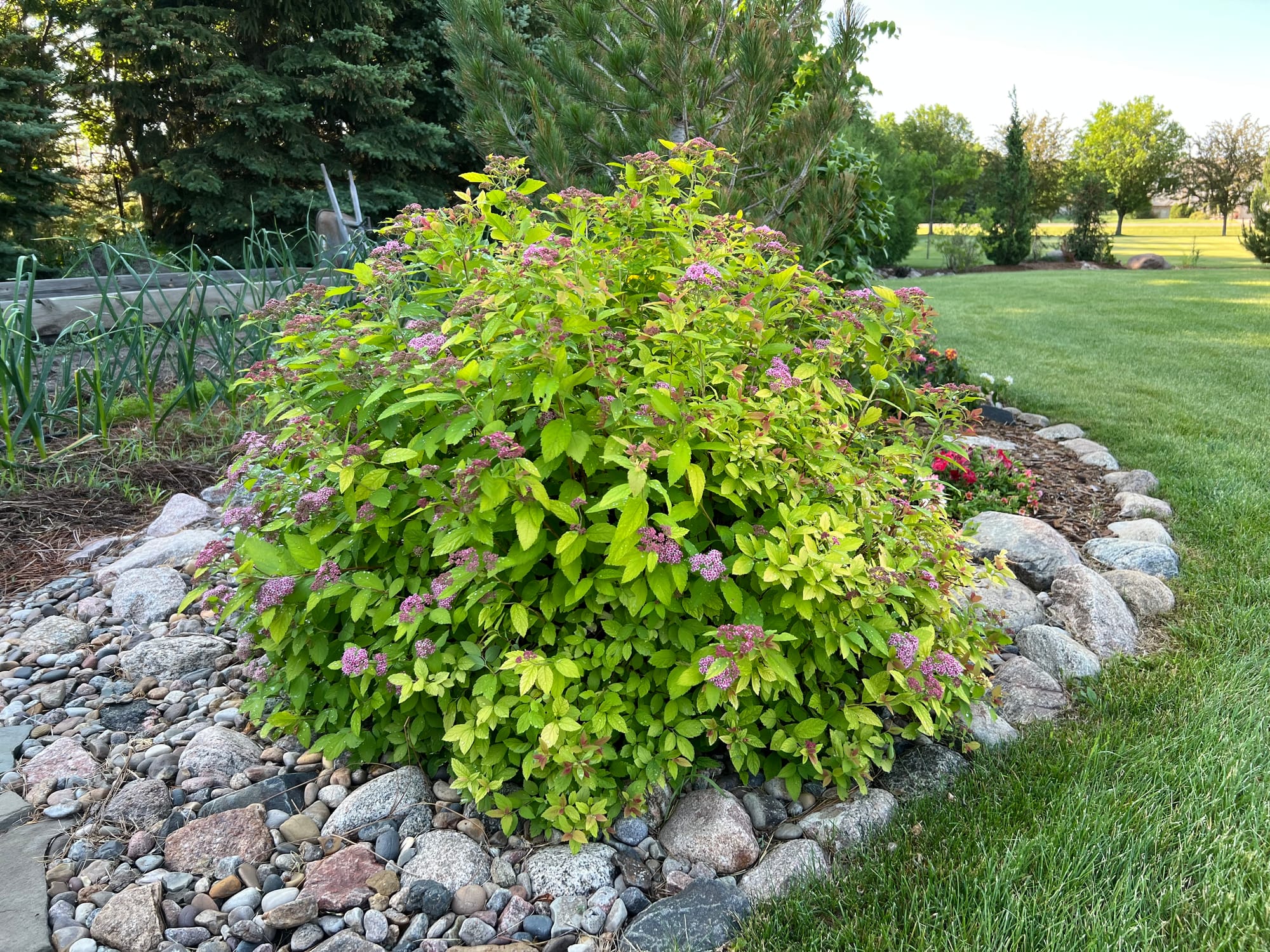
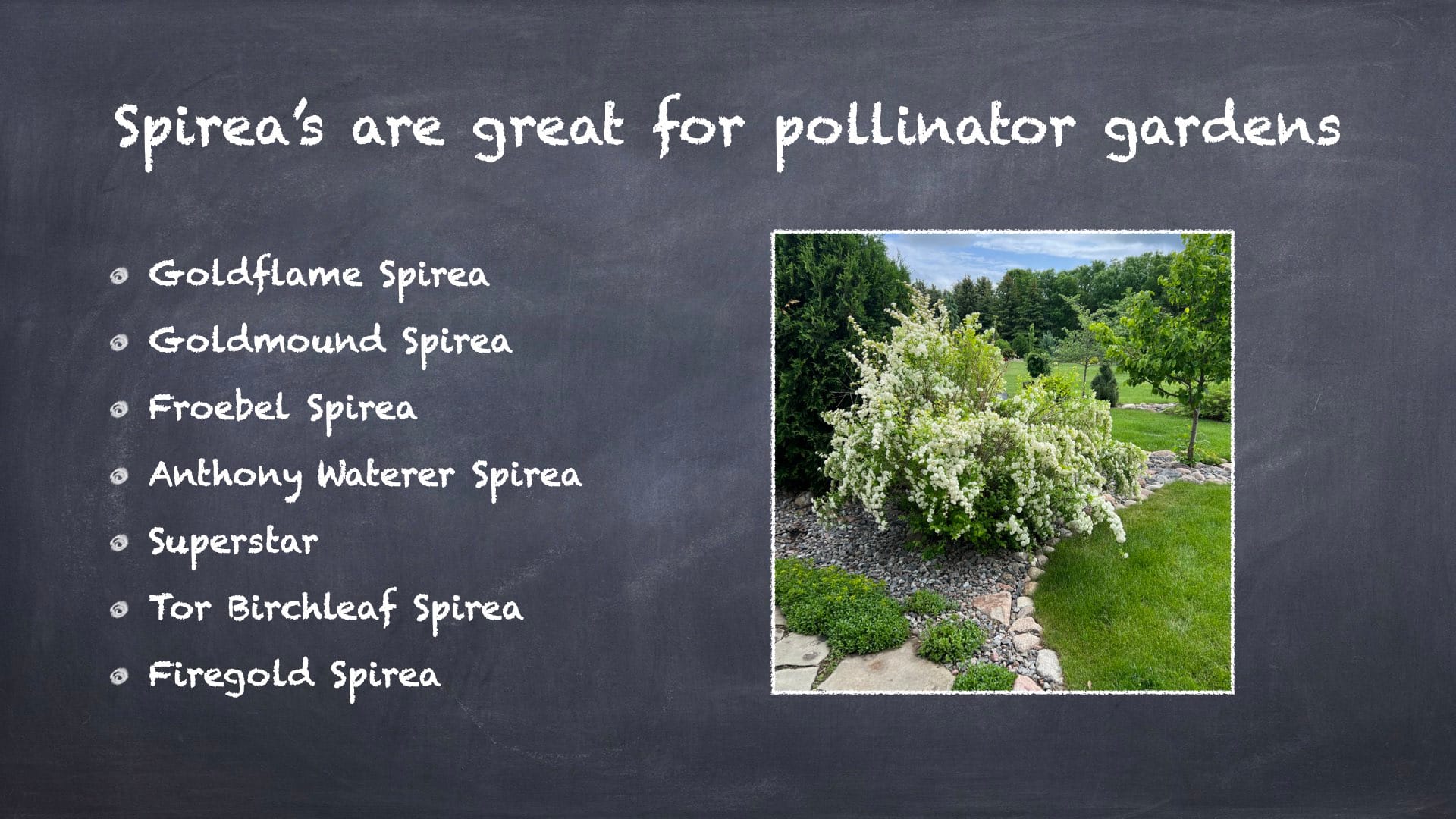
Double Play On Left - Firegold On Right
Quick Fire Hydrangea, Hydrangea paniculata 'Bulk'
Quick Fire is the champ at bringing in pollinators! I refer to it as my Star Wars shrub. The video in this post shows some of the "in-flight" actions of various insects.
Quick Fire has beautiful white flowers that fade to pink. I like to prune back this shrub about halfway every year in late winter. The new growth generated will provide you with maximum flowers.
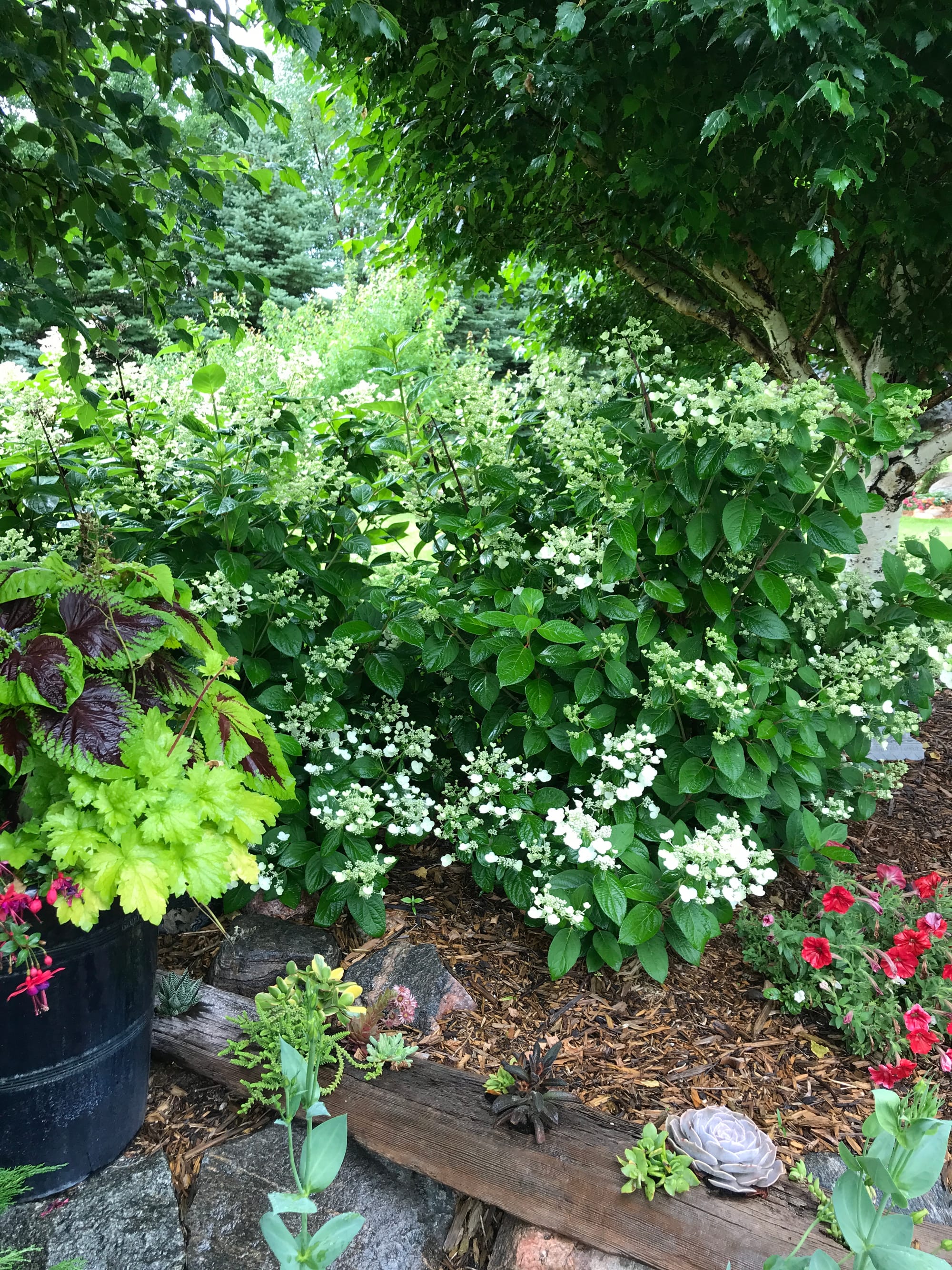
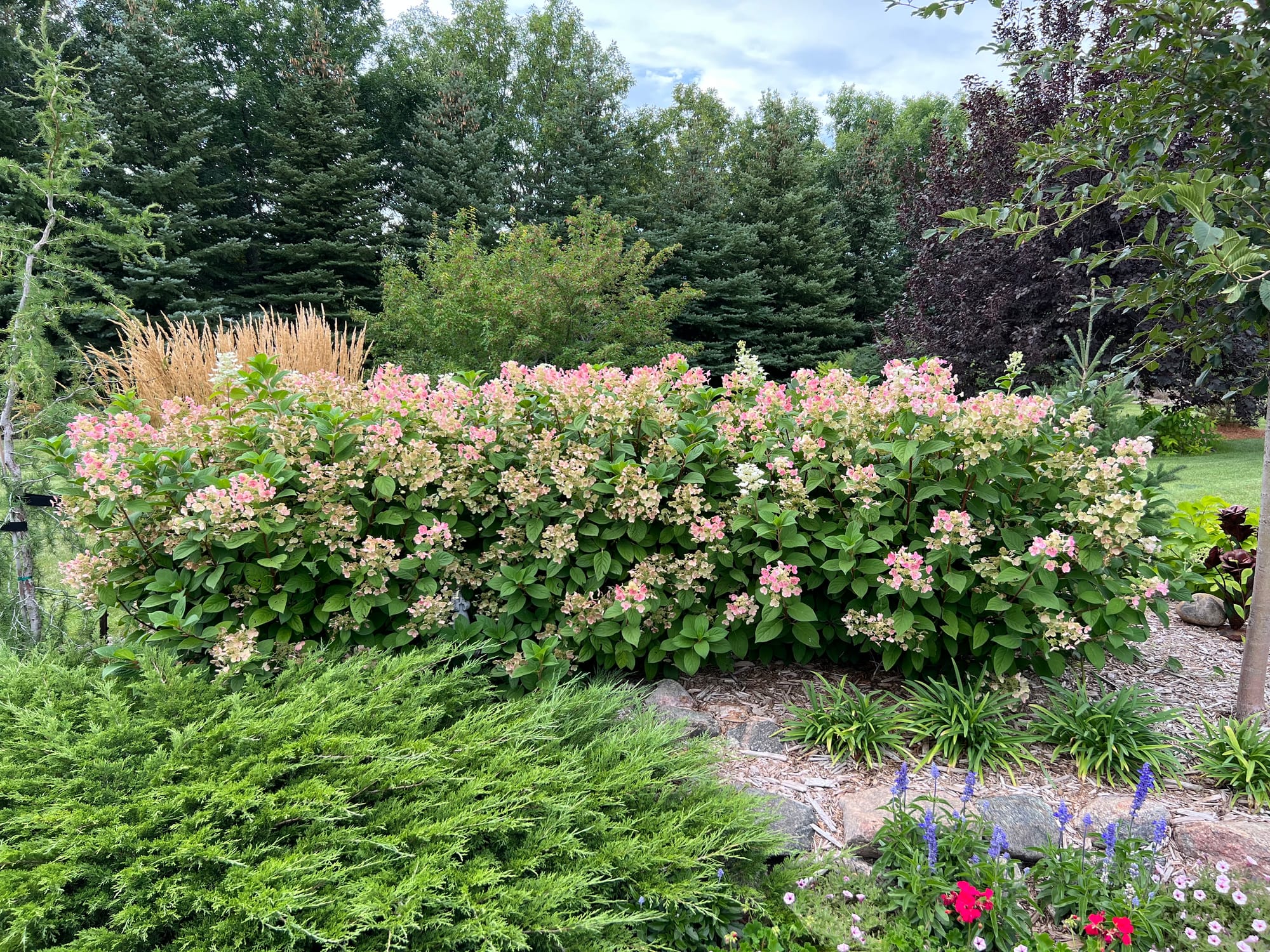
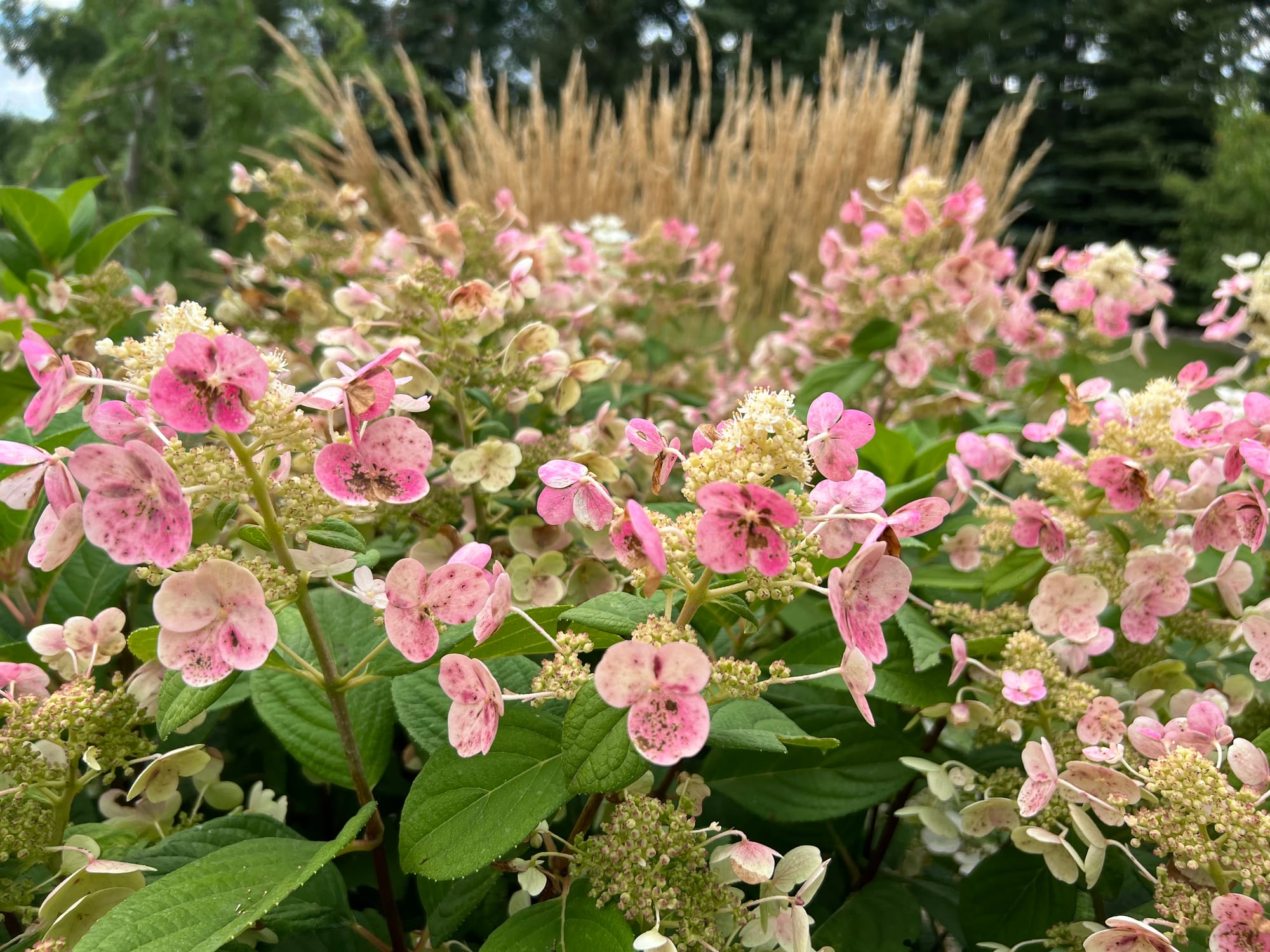
Quick Fire Hydrangea
Garden Hike is supported by its audience. When you purchase through links on this site, we may earn a small commission at no additional charge to you. Thank you.
Click A.M.Leonard’s banner below to check out their great selection of tools and supplies.

Thanks for stopping by Garden Hike!
Kevin
